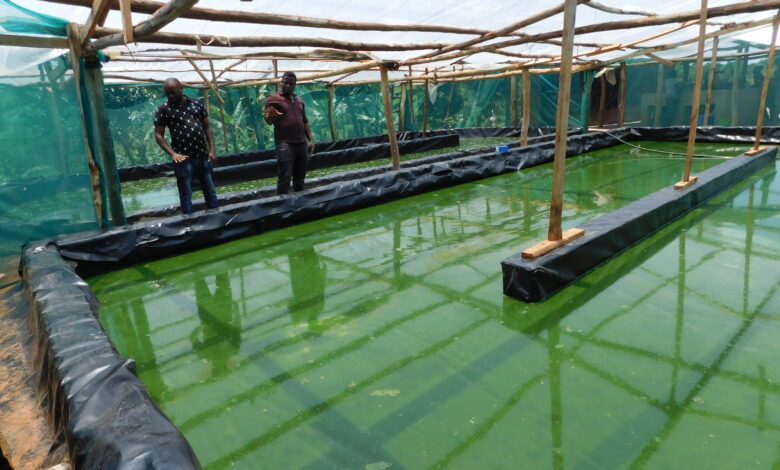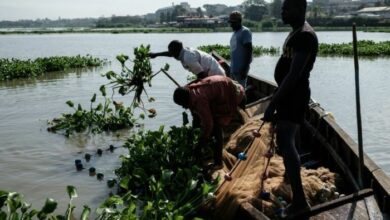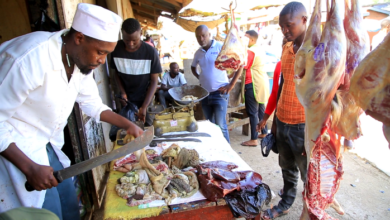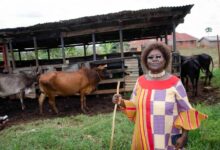Farmers advised to grow spirulina to curb malnutrition in Rwenzori Sub-region

KABAROLE – Farmers in Kabarole district and Rwenzori Sub-region at large have been advised to grow spirulina to curb malnutrition challenges.
Spirulina is a blue-green microalgae that is incredibly rich in protein and nutrients. It falls into the category of superfoods and one of the most powerful sources of nutrients in ancient times.
The executive director Spirulina Development Institute, Anthony Ayebare said spirulina is considered a luxurious food that is within the rich of a few. However, he said as an institute, they want to ensure that it is available to all people regardless of their social status.
Ayebare said spirulina is grown in water and does not come in contact with land. It requires a pool or container which can be placed in a yard or on balcony, windowsill or roof and can be consumed dry or fresh.
“Spirulina has so many health benefits but most importantly it curbs malnutrition in children and increases immunity in both young and old. Spirulina seems to be expensive but we are looking at ways how our farmers can have it grown and consumed cheaply,” he said.
He said as an institute they are ensuring that spirulina is available to all populations to ensure its health benefits are enjoyed by all at their Ugandan they have established a farm for spirulina in Hakibaale Sub- county Kabarole district.
“We have so far trained about 30 farmers in spirulina growing on a small scale,” he said.
According to health practitioners, malnutrition rate among children below five years is very high in the Kabarole and Rwenzori districts.
According to Aggrey Gwaita, a nutritionist at Fort Portal Regional Referral Hospital [FRRH], every Wednesday, they receive between 30 to 50 mothers with malnourished children below five years.
“Some come with babies below 2.5kilogrammes and we have been advising them to feed their children on food that is rich in nutrients, but surprisingly some tell us that they don’t have food,” Gwaita said.
He attributed the main cause of malnutrition to poor feeding and diseases such as tuberculosis and HIV/Aids.
In Uganda, malnutrition is a hidden problem because children are moderately as opposed to extremely malnourished.
About 2 million under-five children are stunted and 801,000 are underweight. Four out of ten children are critically stunted in western Uganda.
However, earlier studies in Kabarole district found that over 40 percent of children below five years of age were stunted.
In the 13 refugee settlements and 12 hosting districts analysed, around 104,440 children were and will likely be acutely malnourished between February 2022 and January 2023, including around 16,540 children severely malnourished and in need of treatment.
Ayebare said they are working with government to ensure that malnutrition rate is reduced especially in childrenx. He said they are working to supply spirulina as a food supplement in schools, hospitals and refugee settlements.
“We are so far working with five primary schools in Kabarole district, communities and we are soon bringing hospitals and refugee settlements on board,” he said.
Ayebare said they are supplying spirulina to the five primary schools in Kabarole district to work as a pilot project.
“Our mission is to eliminate hunger and malnutrition in Uganda. Spirulina growing in Uganda is a new thing and people need to embrace it because of its health benefits,” he said.
Francis ByabahirwaM a marketing officer at Spirulina Development Institute, said on the world market, a kilogram of spirulina is sold at Shs 250,000 but to make it affordable to the poor and the rich, they are selling it at Shs 100,000.
“Spirulina is a new crop on the market and many people don’t know it so we are first ensuring that they get used to it and know its health benefits. We carry out sensitisation and training farmers how to grow it on a small scale,” he said.
https://thecooperator.news/gulu-farmers-get-low-crop-yields-as-soils-lose-fertility/
Buy your copy of thecooperator magazine from one of our country-wide vending points or an e-copy on emag.thecooperator.news







